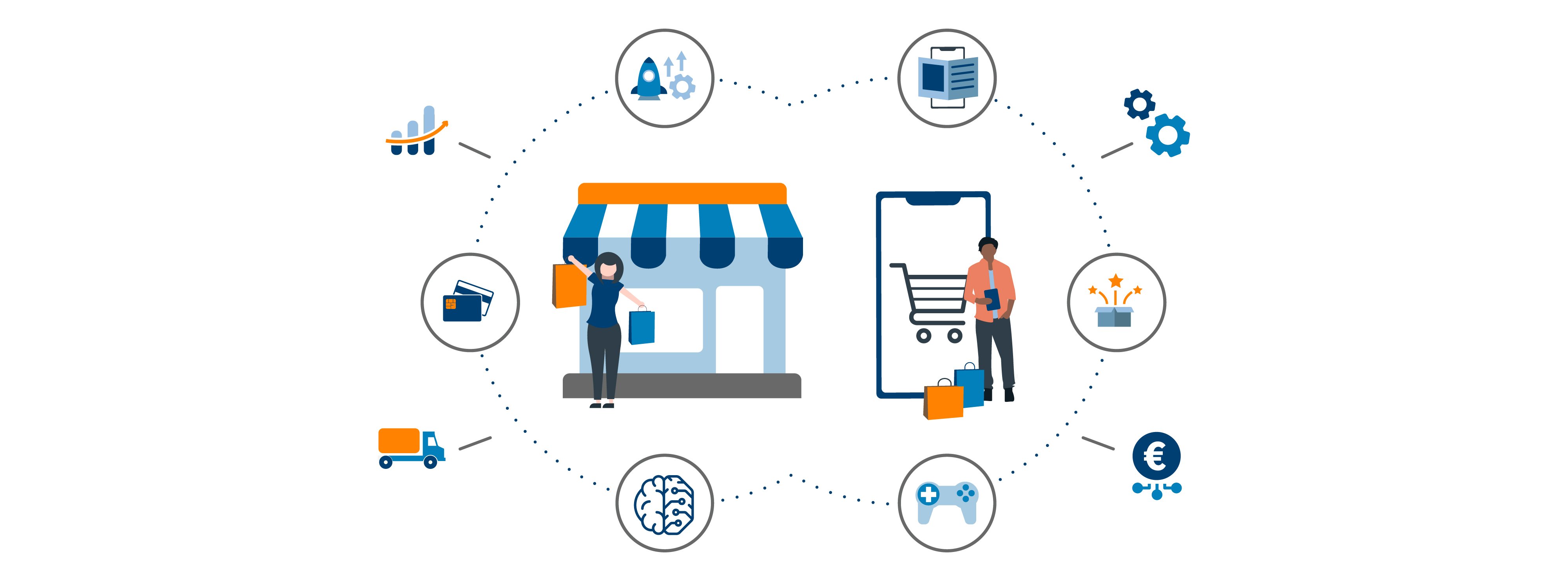Retailers are at a critical juncture. While rumours of the high street’s demise may be somewhat premature, retailers that fail to optimise a fully integrated omnichannel experience are on borrowed time. Now that non-essential shops have returned, consumers are ready to flex their newly-shaped expectations about what they want from both online and in-store shopping. To meet this expectation head on, retailers must invest in omnichannel experiences to ensure their loyal followers do not become a thing of the past.
Bridging the gap between online and offline worlds
The future of retail will surely be an amalgamation of online and in-store shopping. Yes, consumers have undoubtably missed the ‘try on and test’ and social sides of the high street, but they have also enjoyed the accessibility and flexibility provided by online shopping. Technologies are required that can help retailers provide the best of both worlds.
We are already seeing this on the online side, with the rise of chatbots, augmented reality and dedicated Q&A portals. Further digital investments should now be targeted towards in-store experiences – whether that be online catalogues that provide quick stock availability checks, quirky treasure hunts for younger shoppers, or makeovers to take trying and testing to the next level.
Today, consumers want to be immersed in, and interact with, stores. New technologies, like touchable digital canvasses and developments in the mixed reality space, can help trigger emotional reactions and create a powerful connection with shoppers. Experiential retail is the future. A recent report reveals that 59% of consumers predict stores will dedicate more than half of their floorspace to providing experiences by 2025. The primary role of the physical store is changing. Focusing on experientialism will enable retailers to bridge the gap between both online and offline worlds.
Impact on the C-suite
So, what does all this mean for those tasked with steering the ship, and maintaining growth and profitability? For the CFO in particular, the pressure is now on to meet the expectations of customers while protecting today’s business value and enabling future growth – something that can only be achieved with access to accurate cost data.
This shift in priorities is reflected in a recent study which suggested that the agility to adapt to continuous change (62%) and a willingness to experiment and take calculated risks (54%) were the most important leadership qualities for CFOs. But to make this a successful reality requires the ability to scenario plan, to understand the potential impact of investments before committing.
While it may still be the CEO’s job to shift the overall business strategy in line with customer and market demand, it is the CFO who has the power to deliver a boost to retail businesses through cost optimisation. In many respects, CFOs hold the key to future success. However, before they can think about omnichannel investment, they need to invest in financial management tools that truly reveal current investment capabilities against prospective ROI.
The need to analyse market trends to optimise costs is nothing new, of course, but the accelerated reliance on digital channels has put extra pressure on how CFOs direct funds. The entire high street is in the same boat. In a view to compete long into the future, M&S has sought to reimagine the use of physical store layouts to also accommodate office space, while John Lewis is reducing its brick-and-mortar presence by over 20%. In fact, just recently, Gap announced the closure of all 81 stores in UK and Ireland as part of a strategic decision to operate solely online in these regions.
The right investments at the right time
To survive, it is important that businesses strike the right balance when it comes to performance, cost and risk. Acknowledging changing consumer behaviour is phase one for CFOs. Phase two is ensuring that they have a high level of real-time insight so that they can make the right investments at the right time.
It is therefore imperative that retailers utilise the tools needed to gain a transparent view of the business. Financial management tools enable businesses to gather vital and real-time operational, project and vendor cost data. By leveraging this intelligence, retailers can make strategic investment decisions that will be crucial to creating a competitive edge as the high street continues to rebuild after COVID-19.

 German
German

